Chernobyl: What happened when the Yorkshire Post visited the scene of the world's worst nuclear accident


In 2006, Yorkshire Post reporter John Woodcock visited the Chernobyl Exclusion Zone in modern-day Ukraine. This is what he found there, 20 years after Reactor Number Four exploded.
Inside the Zone
We are in the midst of the Chernobyl Exclusion Zone, an area of many square miles emptied of human activity, except for those carrying out 'stabilisation' at the plant, occasional visits from scientific groups, and even a few tourists.
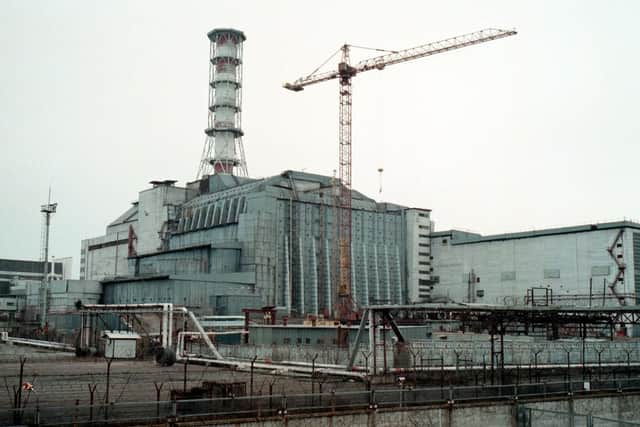

Advertisement
Hide AdAdvertisement
Hide AdThere is no more graphic expression of the desolation than Pripyat, the town purpose-built for Chernobyl's workforce and families until the population of 50,000 was evacuated en masse as a radioactive vapour descended on them following the explosion and fire.
They could never return, and the scene there today is a forlorn monument to rapidly-abandoned everyday life. The public library is still strewn with books no-one has read for 20 years; in the funfair, dodgem cars gradually decay with each harsh winter; a doll lies in the town's nursery where bed-frames line the walls; a piano, sacrificed in the rush to escape, is all that remains of a home on the 14th floor of an eerily-deserted apartment block.
As the commentary in the visitor centre puts it: "Like Hiroshima and Nagasaki, Pripyat was conquered by the atom." The film ends with the message: "The Chernobyl problem is still unresolved."
Further confirmation of that is a vehicle graveyard where 2,000 contaminated relics – former Soviet helicopters, army trucks, tankers, fire engines, ambulances, buses and cars - reveal the scale of the so-called Battle of Chernobyl.
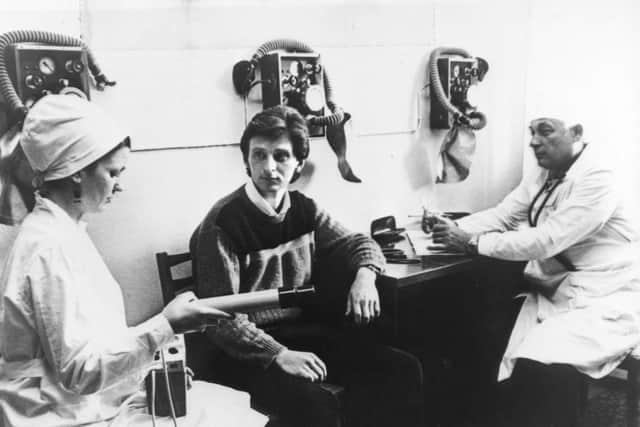

"We were trying to save the world"
Advertisement
Hide AdAdvertisement
Hide AdIn the words of retired army pilot Oleg Chichkov, whose health was ruined by missions to try to minimise the escape of radiation from the burning plant: "We knew the danger. We were trying to save the world, that was the main idea."
What couldn't be saved was normal life 100 miles and more north of Chernobyl, in the Belarus countryside. Under a blue sky, the snowy landscape of marshland, meadows and forests of pine and silver birch looks beautiful. It masks an unseen peril. Much of it is another exclusion zone, littered with abandoned villages whose names have vanished from updated maps.
Police patrol the area, turning away those without access papers. Hardly anyone applies for them, though a few locals have stayed put, or even returned. They are left to their fate by the authorities.
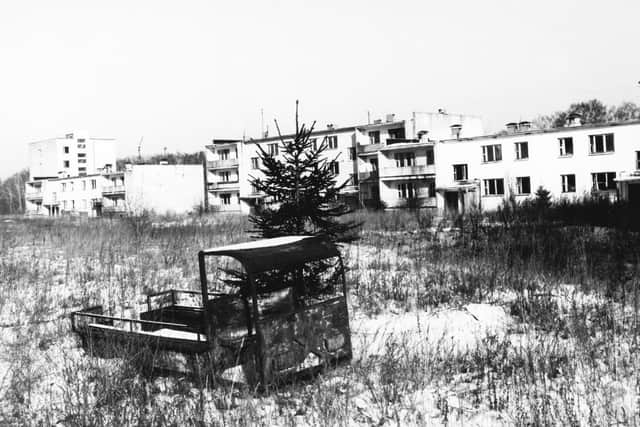

The ones who came back
In what was Komsomolskya Street, in the hamlet of Bartolomeevka, the electricity was cut off years ago, and the postman never calls. At No 23 an elderly couple, Ivan and Lena Muzychenko, survive through their chickens and hens, water drawn from a well, and the food they produce in their polluted garden. "It is better to die from radiation than hunger," they say.
Advertisement
Hide AdAdvertisement
Hide AdAgainst all advice, Nikolai Gordunov returned to the village. In 1991, he was evacuated to a 'safe' town far away. After three years he could no longer tolerate urban living and prefers to risk his life in the blighted environment where he grew up.
Vladimir Kovzelev might have made a similar choice but it was not an option for him. His village, Besed, about 140kms from Chernobyl, is in the lethal Purple Zone and most of what was once a prosperous farming community has been flattened by bulldozers.
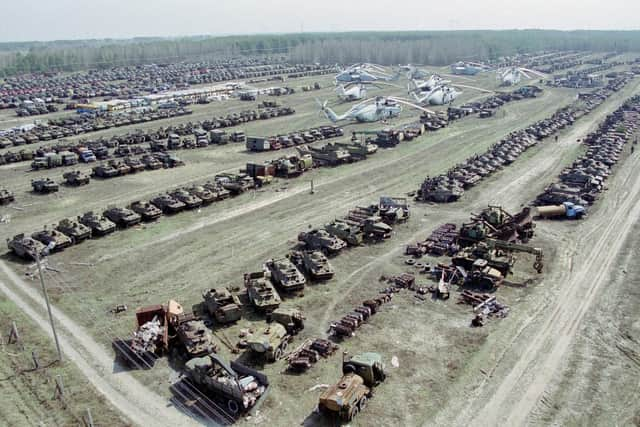

Visitors are deterred, except for the one day in May when people are permitted to return to pay their respects at the memorial to 300 soldiers of the Red Army who died there in the Second World War.
Kovzelev will one day return for good. Death will bring him back. He'll be in a coffin and join his parents and other relatives in a railed-off plot in Besed's cemetery. The Germans destroyed the village in in 1941; Chernobyl wiped it out in 1986.
The scientists fighting against nuclear power
Advertisement
Hide AdAdvertisement
Hide AdBelarussian dissident Professor Yuri Bandazhevsky has exposed the long-term health repercussions linked to Chernobyl. His wife has suffered from thyroid and womb cancers which he attributes to radiation. He conducted research into the impact on foetuses from their apartment in Minsk. He is a fervent opponent of nuclear power.
"To those sitting in offices, debating this issue, I have a simple message: to want more nuclear power rather than less is madness. I wish I could show these people what I see in mortuaries in my country. I wish I could show them the horror of what my experiments reveal. I would say to them, 'Do you need further proof?'"
Among the critics, few have a more passionate or persuasive voice than Adi Roche, who has devoted the last 15 years to alleviating the human consequences of the disaster.
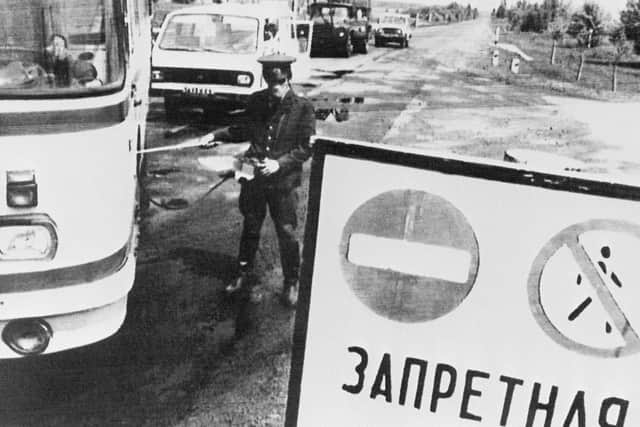

The charity she founded, the Chernobyl Children's Project International, has so far raised 40m to provide medical care, a range of practical help, and respite visits to her native Ireland for thousands of sick children in Belarus, the country which suffered most as wind and rain poisoned 70 per cent of its territory with fall-out.
Advertisement
Hide AdAdvertisement
Hide AdShe has also crossed into Ukraine several times to visit the stricken plant as part of her anti-nuclear campaign. In the process she may have jeopardised her own health because the invisible, odourless cocktail of radioactive material still within reactor No 4 is leaking into the atmosphere through holes in its protective shell. Radiation readings at the core are said to be 300 million times greater than natural levels, yet it will be some years before a permanent seal is built.
"We are in the middle of madness here. Chernobyl represents the first large-scale 'experiment' in the management of a nuclear crisis, and it has failed miserably."
Could it happen again?
The World Nuclear Association argues that Chernobyl was a 'unique event' that had 'minimal' relevance outside its own region.
Viktor Krasnov, director of the Department of Nuclear Radiation Safety at Chernobyl, where he has worked for 14 years, talks optimistically about the situation, despite the fears of some experts that the reactor's core could implode, causing even greater devastation than before.
Advertisement
Hide AdAdvertisement
Hide Ad"There is no immediate danger," he insists. "The situation is under control. It is absolutely safe."
Unlike many others, whose faith in nuclear science was shattered by the accident, Krasnov remains a believer. If he had his way, Chernobyl would still be generating electricity in support of Ukraine's four other nuclear plants and helping to reduce reliance on politically vulnerable energy supplies from Russia.
His view is that the lessons learned at Chernobyl have benefited the industry as a whole. "I am absolutely sure that such an accident will never happen again. Nuclear energy is safe."
The shadow that is still cast
In parts of the former Soviet Union, people there have been paying with their lives for 20 years, the threat to unborn generations remains unknown, and vast tracts of land are so poisoned they are likely to be uninhabitable for centuries.
Advertisement
Hide AdAdvertisement
Hide AdOfficially, 56 deaths have been attributed directly to the world's greatest environmental disaster. Its wider impact on the region was highlighted by the report of the Chernobyl Forum, an international group of scientists, United Nations agencies, and the governments of Ukraine, Belarus and Russia. It revealed that about seven million people were receiving or eligible for support as Chernobyl victims.
Health and social problems are immense. In irradiated areas there has been a 2,400 per cent increase in thyroid cancer cases, and one eminent doctor in Belarus has been persecuted for also linking Chernobyl to an epidemic of heart disease in children and other genetic disorders.
The day disaster struck
In the early hours of Saturday, April 26, 1986, the Chernobyl nuclear power plant in Ukraine was being prepared for shut-down - what should have been a routine procedure to enable maintenance and repairs to be carried out.
But Leonid Toptunov, an inexperienced and tired operative, made a fatal mistake. He allowed the level of reactivity in one of the plant's reactors to fall dangerously low. As he attempted to correct the situation, the power of the reactor rose dramatically and uncontrollably. Emergency procedures failed because of faulty equipment. In the subsequent chain reaction there was a tremor likened to an earthquake during the meltdown of the reactor core, and then an explosion which blew off its 2,000-tonne steel lid, and dislodged the concrete outer shield. A huge fire followed.
Advertisement
Hide AdAdvertisement
Hide AdOver the next 10 days, billions of curies of radioactivity escaped into the environment, polluting large areas of the northern hemisphere, including parts of Britain. Initially, the Soviet authorities reacted by imposing a news blackout as thousands of people in the immediate area were evacuated and efforts began to try to control the effects of the disaster. Over the following weeks, months and years, 600,000 individuals, known as "likwitators" and drawn from all over the Soviet Union, were involved in the clean-up operation. Many have since died or are seriously ill from the effects of radiation.
Toptunov was among the first to die. His mistake triggered the worst accident in the history of nuclear energy, but the underlying causes sprang from Soviet ideology during the Cold War. It led to design flaws compounded by the inadequacies of the plant's operators and a culture in which training and safety procedures were minimal.